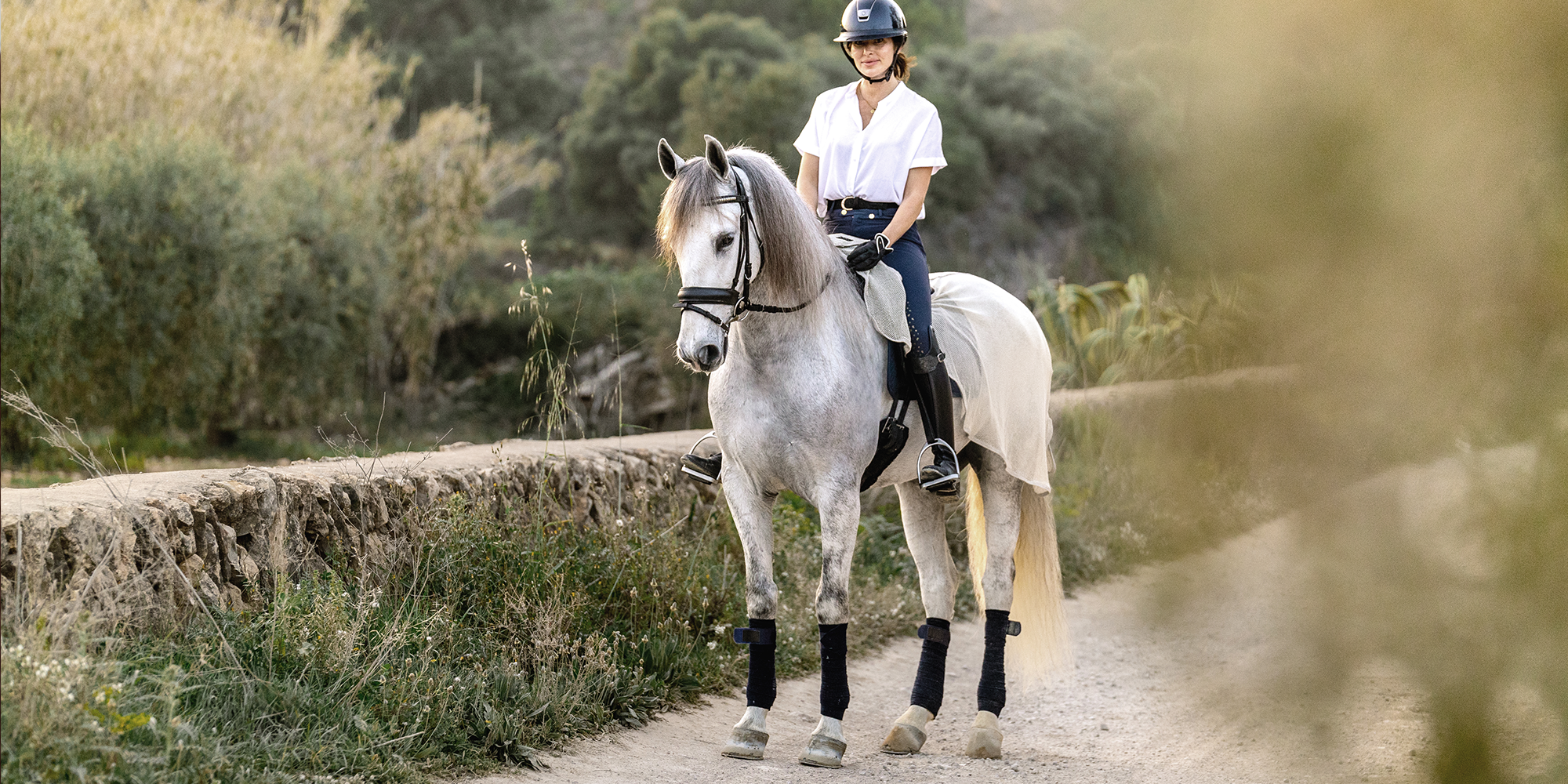Article: Osteoarthritis in horses: causes, symptoms and treatment options
Osteoarthritis in horses: causes, symptoms and treatment options
What is osteoarthritis in horses?
Osteoarthritis is a degenerative joint disease that affects not only humans but also horses. It is a progressive breakdown of cartilage within one or more joints, which leads to pain, restricted movement and inflammation. Over time, osteoarthritis can progress to the point where the affected joint loses some or even all of its function. The hoof, knee and hock joints are particularly frequently affected.
Causes of Osteoarthritis in Horses
There are many causes of osteoarthritis in horses. The most common factors include:
- Age-related wear and tear : Older horses are particularly vulnerable as their joints wear down over the years.
- Incorrect loading : Incorrect training, inappropriate riding or faulty hoof care can overload the joints.
- Injuries : Trauma, bruises or tendon injuries can lead to osteoarthritis in the long term.
- Obesity : Excessive body weight puts strain on the joints and accelerates wear and tear.
- Genetic predisposition : Some horse breeds are more prone to joint diseases due to their anatomy.
A study by the University Veterinary Hospital Zurich offers further insights into current scientific findings .
How does osteoarthritis manifest itself in horses?
Osteoarthritis develops gradually and is often only recognized when the first symptoms become apparent. Signs of osteoarthritis in horses can be:
- Stiffness after getting up or after longer periods of rest
- Unwillingness to exercise , especially at the beginning of training
- Difficulty turning or on uneven ground
- Swelling or heat development in the affected joints
- Lameness that varies depending on the load
- Grinding or cracking noises in the joints
Can a horse with arthritis still be ridden?
Whether a horse with arthritis can be ridden depends on several factors. In early stages and with mild arthritis, adapted exercise is often even useful to keep the joints supple and prevent muscle loss. Important aspects here are:
- Individual load adjustment : No long or hard training sessions, but targeted movements with lots of steps.
- Warming up before and after riding : A thorough warm-up phase ensures better joint lubrication.
- Gentle soil : Hard or very deep soils should be avoided.
- Physiotherapy and targeted exercises : Stretching exercises and special training sessions can improve mobility.
In advanced stages or when the pain symptoms are severe, riding should be avoided. In such cases, it is advisable to consult a veterinarian for an individual assessment. Other treatment approaches are also described in a specialist article published by the veterinary publishing house .

Stable boots with alpaca fleece: How can they help with arthritis?
An innovative and natural method of supporting horses with arthritis is stable boots with alpaca fleece lining . They offer several advantages:
1. Heat effect
Alpaca fleece has excellent insulating properties. It keeps the affected joints warm, which promotes blood circulation and allows synovial fluid to circulate better. This can relieve pain and improve mobility.
2. Pressure distribution and support
The gaiters provide gentle compression and can help reduce swelling in the joints.
3. Natural fiber properties
Alpaca fleece is hypoallergenic and breathable, preventing the skin under the gaiters from sweating or becoming irritated.
4. Relief during rest periods
Horses with arthritis often stand for long periods in the stable and develop stiffness. The stable boots support the joint during the rest phase.
-> click here for the product!
Conclusion: Osteoarthritis in horses is a serious but easily treatable disease
If detected early, it can be alleviated using various methods so that affected horses can live pain-free for many years. Stable boots with alpaca fleece offer effective and natural support by keeping the affected joints warm and stabilizing them. In addition, attention should be paid to posture, exercise and nutrition that are gentle on the joints. With the right care and treatment, a horse with arthritis can continue to lead an active and happy life. Further scientific information on osteoarthritis in horses can be found in a comprehensive study in equine medicine .


